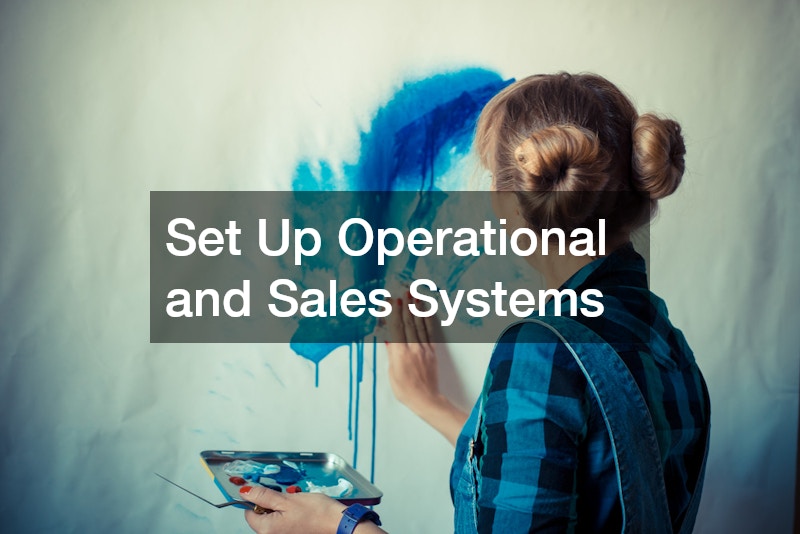When you open an art gallery, it is an exciting venture that combines creativity with entrepreneurship. This guide will walk you through the essential steps of transforming a physical space into a thriving art gallery and planning a grand opening that will captivate art enthusiasts and collectors alike. Whether your passion lies in the avant-garde or classical realms, establishing your art gallery requires strategic planning and execution from start to finish.

Define Your Vision and Concept
The first step to open an art gallery is to clearly define your vision and concept. Understanding the type of art you want to showcase and the message you wish to convey will shape every decision you make moving forward. This initial clarity will not only guide your curation efforts but also help you differentiate your gallery in a competitive market.
Consider your audience and the experience you want to provide them. Are you aiming to create an intimate space for emerging artists, or are you planning a larger venue for established artists? Your vision will influence everything from interior design to the events you’ll host.
Once you have a refined concept, communicate it effectively through branding and marketing materials. Engaging with a digital marketing agency can ensure that your online and offline presence aligns with your artistic vision, making it appealing to your target demographic. Always remember that your vision should be the driving force behind every investment and operational decision.
Research the Local Art Scene and Market
Before committing to a specific market, conduct thorough research on the local art scene. This involves visiting existing galleries, attending art shows, and networking with artists and enthusiasts. Understanding the dynamics and demands of the local market will help you carve out your niche and attract the right clientele.
Take note of what types of art are popular in the area and identify any gaps or opportunities. Analyze the competition and consider how your gallery can offer a unique experience or perspective. Seek insights from local artists who can provide firsthand accounts of what patrons are looking for in terms of creativity and community engagement.
In addition, gather data on demographic trends and economic conditions to determine the financial feasibility of your gallery. A critical look at local commercial real estate prices and trends can also provide you with vital information when securing your location. Combining these insights will help ensure that your gallery not only thrives but also becomes a beloved fixture in the community.
Secure a Suitable Location
Location is a critical success factor when you open an art gallery. Start by evaluating neighborhoods that align with your artistic vision and societal values. Proximity to cultural landmarks, eateries, and other galleries can enhance foot traffic and visibility, making your gallery a destination for art lovers.
When selecting a space, consider the physical attributes necessary for displaying art effectively, such as lighting, wall space, and layout. The availability of parking and public transportation options are also important to accommodate visitors. Collaborate with commercial real estate agents who understand the nuances of finding a space conducive to an art gallery.
Once you have a location in mind, address logistical details such as commercial cleaning and adequate showroom design. Consider enlisting a commercial remodeler to tailor the space to your specifications. Having a professional team will help you enhance the appeal of your gallery and provide an exceptional viewing experience right from the beginning.

Budgeting and Funding
Establishing a comprehensive budget is essential for navigating the financial complexities when you open an art gallery. Begin by outlining all potential expenses, including rent, utilities, marketing, and salaries. Also, include costs for commercial remodeler services, custom sign providers for branding, and essential tools for operating the gallery.
Once you’ve estimated expenses, explore various funding options to support your gallery’s startup costs. Consider personal savings, small business loans, grants, and potential partnerships with investors. Engaging with marketing strategy services can also offer performance-based financial insights, enabling you to formulate convincing proposals and pitches for financial backing.
Lastly, maintain financial flexibility by setting aside contingency funds for unexpected costs. This will ensure that your gallery remains operational even when faced with hurdles. Regularly revisiting and adjusting your budget based on gallery performance helps sustain long-term growth.
Plan Commercial Renovations and Layout
Once you secure a location, it’s crucial to plan your commercial renovations and layout meticulously. Start by evaluating the existing condition of the space and identifying the renovations needed to transform it into an elite art gallery. Engaging with professionals such as a commercial remodeler and painting contractor can ensure that renovations meet both aesthetic and functional standards.
Consider implementing sublime showroom design that not only captivates but also optimizes the presentation of your art pieces. Features such as adjustable lighting and versatile wall divisions can enhance the vibrancy and variety of your exhibitions. Furthermore, invest in elevator modernization to create an inclusive and accessible space for all visitors, regardless of physical ability.
Don’t overlook the necessity of maintaining security measures such as a commercial security system, which will protect your artwork and gallery premises. As you finalize your layout plans, aim to create a space that invites, inspires, and engages visitors—a testament to your vision and artistic values.
Obtain Necessary Permits and Licenses
Before you open an art gallery, it’s essential to obtain all necessary permits and licenses to operate legally. Research the regulatory requirements in your area, as these can vary based on local ordinances and the specifics of your gallery operations. Legal compliance protects not only your business but also reassures patrons.
Commonly required documentation may include a business license, fire safety clearance, and zoning permits specific to art exhibitions. A comprehensive showroom design plan may assist in expedited approvals for these permits, aligning your exhibition space with all statutory obligations. To streamline this process, consider consulting local regulatory experts to navigate bureaucracy efficiently.
Ensuring compliance from the outset can prevent costly fines and operational shutdowns. Prepare for periodic inspections to ensure continued compliance, adjusting your permits as needed as your gallery expands or modifies its offerings. This foundational step becomes a cornerstone of your gallery’s reputable standing within the community when you open an art gallery.

Curate Initial Collection and Exhibits
Curating your gallery’s initial collection and exhibit is a thrilling milestone that brings your artistic vision to life. Begin by identifying emerging and established artists who align with your gallery’s theme. This initial collection will shape your gallery’s artistic identity and appeal to your target audience.
Consider the importance of including a diverse range of art styles and mediums to attract a wider audience. Collaboration with artists who offer unique aesthetics and storytelling can elevate the prestige of your gallery. Additionally, showcasing emerging artists can nurture a sense of community and innovation, establishing your gallery as a platform for new talent.
Developing a rotation schedule for exhibitions helps maintain engagement and freshness. Regularly refreshing your gallery’s offerings can attract repeat visitors and keep the local art scene lively. Remember, the curated collection serves both as an initial invitation and an ongoing dialogue with your audience.
Build Partnerships with Artists
Building and nurturing relationships with artists is essential for the success of any art gallery. Start by networking with local, national, and even international artists whose work resonates with your gallery’s vision. Cultivating these partnerships can lead to a synergistic relationship that benefits both artist and gallery.
Communicate openly with artists about exhibition opportunities, collaboration prospects, and promotional efforts. Collaboration with artists for exclusive launch exhibitions, workshops, and lectures can enrich the gallery experience for visitors. Implementing structured agreements and timely payment practices fosters trust and loyalty, making your gallery a sought-after platform for artists.
Consider offering studio visits and portfolio reviews for further engagement with artists. This outreach initiative not only strengthens individual artist relationships but also bolsters the wider art community. Such initiatives underscore your gallery’s commitment to nurturing talent, enhancing its reputation as a credible and supportive art space.
Develop a Marketing and Branding Strategy
Creating a robust marketing and branding strategy is indispensable for building your gallery’s presence and reputation. Collaborate with a digital marketing agency to develop a comprehensive plan that includes both online and offline components. A coherent strategy draws in new visitors and keeps your gallery top-of-mind among potential clients and art enthusiasts.
Utilize social media platforms, email campaigns, and art blogs to reach your audience effectively when you open an art gallery. Highlight upcoming exhibitions, artist partnerships, and community events in your marketing materials. Engaging marketing strategy services can provide insights into audience preferences, ensuring your promotions are impactful and resonate with your intended market.
Your branding efforts should embody your gallery’s mission, vision, and ethos. Custom sign providers can implement cohesive design elements for all signage and promotional materials. Consistency across all branding efforts solidifies your gallery’s identity, making it easily recognizable and appealing within the competitive art scene.

Set Up Operational and Sales Systems
Behind the scenes, efficient operational and sales systems are vital to maintain smooth gallery operations. Start by setting up inventory management systems to organize and track your art collection. This system not only simplifies curation processes but also aids in sales transactions and reporting.
Explore point-of-sale systems that accommodate both in-gallery and online sales, ensuring a seamless purchasing experience for clients. These systems can support marketing efforts by integrating customer relationship management tools. Employing a commercial security system can safeguard assets while ensuring a secure purchasing environment.
Additionally, consider hiring professional staff with expertise in customer service and art sales when you open an art gallery. Their ability to engage visitors, provide insights into artworks, and complete sales effectively enhances the overall gallery experience. Personnel ensure that operations run smoothly, allowing you to focus on strategic growth and expansion.
Plan Your Grand Opening Event
Beyond operational preparations, your grand opening event serves as an essential milestone for your gallery. This event is an opportunity to introduce your gallery and its curated offerings to the public, as well as to establish connections with potential patrons and collaborators. Plan meticulously to create a memorable and welcoming affair for all attendees.
Consider elements such as thematic decor, guest speakers, live performances, and catering options to enrich the event experience. It’s a chance to showcase not only your featured collections but also your gallery’s commitment to community involvement and cultural discourse. Engaging with a digital marketing agency to promote the event ensures maximum exposure and attendance.
Networking opportunities during the event can foster ongoing relationships, while engaging speeches and guided tours can deepen appreciation for the artwork on display. A successful grand opening sets the tone for your gallery’s journey, prompting curiosity and return visits from those who attend.
Launch and Engage with the Community
When you open an art gallery, it is just the beginning; sustained community engagement is vital for ongoing success. Strive to cultivate lasting bonds with visitors, patrons, and local organizations. Community-based art events, workshops, and collaborative projects can weave your gallery into the social and cultural fabric of the locale.
Consider forming strategic alliances with educational institutions, cultural centers, and fellow art venues. These partnerships can lead to joint events, educational programs, and extended network reach. Regular communication with stakeholders further establishes your gallery’s standing as an integral part of the community’s creative scene.
As your gallery grows, continue to adapt to evolving trends and audience preferences. Leveraging feedback and performance metrics from your marketing and operational systems helps you remain relevant and competitive. An actively engaged community heralds the transformational power of art, unfolding the next chapters of your gallery’s story.
To open an art gallery, you need a blend of strategic planning and passion for the arts. By following these outlined steps and considerations, your gallery will be well on its way to becoming not only a commercial success but also a celebrated hub for creativity and cultural exchange.

